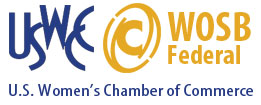
Here are 10 practical tips to help you attract great talent while keeping things manageable.
1. Speed Up the Process
Small businesses often wear many hats, and hiring can feel like one more thing on your plate. But if your process takes too long, you risk losing great candidates to faster-moving competitors.
Simplify where you can:
- Keep the application short and to the point.
- Review resumes quickly and schedule interviews promptly.
- Be clear about next steps so candidates know what to expect.
A faster process not only helps you secure talent but also leaves a positive impression.
2. Keep Communication Simple
You don’t need fancy tools to stay in touch with candidates—just be responsive and clear. Whether it’s a quick phone call, an email, or even a text, timely communication shows candidates you respect their time.
- Use text messages for quick scheduling or updates.
- Respond promptly to questions and applications.
- Avoid leaving candidates in the dark; let them know where they stand.
Clear communication can make your hiring process feel seamless and professional, even for small teams.
3. Make It Easy to Apply
Don’t scare off great candidates with a complicated application process. Make sure it’s easy for people to apply, even if they’re using their phone.
- Offer a simple online application form.
- Avoid asking for unnecessary details—stick to what you truly need to know.
Making it convenient to apply ensures you don’t lose out on good applicants simply because your process felt too cumbersome.
4. Freshen Up Your Website
Your website doesn’t have to be fancy, but it should make a good impression. A clean and welcoming careers page can go a long way in helping candidates see what your business is all about.
Include:
- Clear job descriptions.
- A little about your company’s culture and values.
- Easy-to-follow instructions for applying.
Even if your website is simple, a professional and inviting tone can make all the difference.
5. Consider Video Interviews
If scheduling in-person interviews is tricky or if you’re considering remote candidates, video interviews are a great option. Tools like Zoom or Google Meet are free and easy to use.
Video interviews also save time for both you and the candidate, making it easier to connect with great people without overcomplicating the process.
6. Show Off Your Business on Social Media
Social media isn’t just for customers—it’s also a great way to attract employees. Share posts about what makes your business special, highlight team accomplishments, and let people know when you’re hiring.
Even if your following is small, a genuine and personal touch can draw in candidates who want to be part of your team.
7. Post Jobs Where Your Candidates Are
You don’t have to use every job board out there. Focus on platforms where your ideal candidates spend their time. For example:
- Social media (Facebook, Instagram, or LinkedIn).
- Community bulletin boards or local job groups.
- Referrals from your current team or network.
Sometimes, the simplest methods are the most effective.
8. Pay Attention to What Works (and What Doesn’t)
You don’t need a big data system to figure out what’s working. Take note of where your best candidates are coming from and what might be slowing you down.
For example:
- Are candidates dropping off during the application process? Maybe it’s too long or confusing.
- Are certain job boards bringing in more qualified candidates? Focus your efforts there.
Paying attention to small patterns can help you make adjustments without needing fancy tools.
9. Ask Questions That Matter
Stick to practical and relevant questions during interviews. Instead of using overly formal or “standard” questions, focus on ones that will help you understand if the candidate is the right fit for your team and your business.
For example:
- Ask how they’ve handled challenges similar to what they’ll face in your business.
- Talk about what excites them about joining a small team.
This approach helps you connect with candidates who will thrive in your unique environment.
10. Don’t Be Afraid to Ask for Help
If hiring feels overwhelming, it’s okay to ask for help. Whether it’s getting advice from a trusted colleague, working with a recruiter, or using a local staffing agency, having support can make the process much easier.
Sometimes, outsourcing just one part of hiring—like screening resumes or posting job ads—can free up your time for what you do best: running your business.
Hiring doesn’t have to be complicated or high-tech to be effective. With a thoughtful and approachable process, small businesses can attract amazing talent without feeling overwhelmed.
If you’re looking for guidance or support, Staffing Proxy is here to help. Contact us today to learn how we can make hiring easier for your business!

